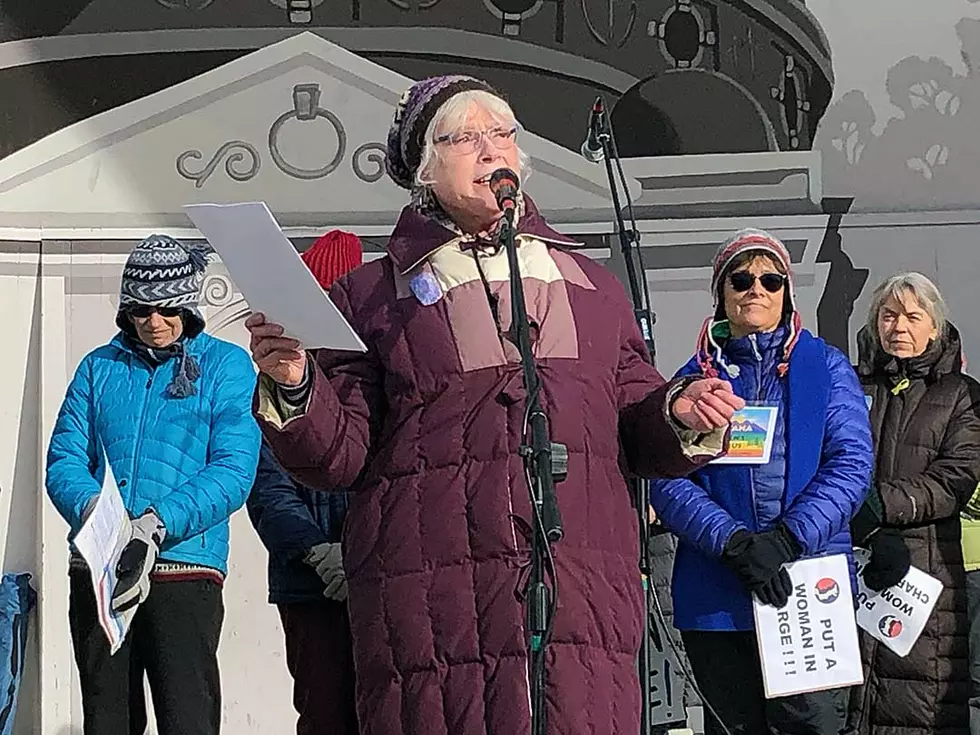
After the march: Missoula women reflect on ratification of 19th Amendment
During the annual Women's March in Helena last week, Missoula's Nancy Leifer – a life-long public policy expert – considered the 100th anniversary of women’s right to vote, saying it didn't happen overnight and challenges remain, even a century later.
“The battle for women’s right to vote is not over,” Leifer told the crowd of about 650 marchers who gathered last week. “The right to vote in free and fair elections requires our continual vigilance, action and support.”
As the board president of Montana League of Women Voters and co-president of the Missoula chapter, Leifer shared a brief background of how the 19th Amendment came about – after seven decades of perseverance before it was finally ratified in 1920.
“The 19th Amendment didn’t happen overnight – it took 72 years from the first meeting in Seneca Falls in 1848 to final ratification in August of 1920,” said Leifer, urging the current-day faithful to dream big. "We women are capable of great achievements against great odds.”
Only Caucasian women – no women of color or Native Americans – won the right to vote in 1920. It wasn’t until the Voting Rights Act of 1965 that African Americans and Native American women could vote.
The march last week drew significantly fewer people than the mass inaugural march in 2017 that attracted 10,000 Montanans to Helena to protest and rally around the capitol. But this year's crowd proved as fervent and forward-thinking. Among them was a busload of 40 women from Missoula, including long-time community activists and a few girls.
“I’ve just never been to something like this before,” said Jessica Patton, a Washington Middle School teacher who carpooled with 10 other educators in three cars from Missoula. “I wanted to check it out and support a bigger cause. It’s about unity – women and men together.”
Leifer said that ratification “was by no means a sure thing” in 1920, when it was required that 36 states vote in favor. By the end of March, 1920, 35 states had ratified the amendment, but by summer, progress had stalled.
“The states where support was strong had all ratified," Leifer noted. "Only Southern states were left, and their support was unlikely. The best hope for the final state ratification was Tennessee.”
The League of Women Voters also celebrates 100 years since its founding on Feb. 14, 2020. It's a significant parallel legacy Leifer attributed to the Suffragettes.
“In anticipation of ratification, the National American Suffrage Association met in February of 1920 in Chicago – a full six months before ratification was final – and formed the League of Women Voters, a ‘mighty political experiment’ designed to help 20 million women carry out their new responsibilities as voters,” she said.
Suffragists passed and ratified the 19th Amendment without having the right to vote in 33 of the 48 states at the time.
“They demonstrated that it is possible to amend the U.S. constitution,” she said.
But the victory came at a cost.
Women suffragists experienced much public ostracism, hate campaigns, physical violence, imprisonment, hunger strikes and forced feedings. Some were even publicly condemned as traitors during World War I.
Leifer’s lesson for the contemporary crowd proved to be a rallying cry.
“Women are strong when we have commitment, patience, persistence, endurance and mutual support to persevere in the face of opposition,” she told the crowd last week.
Citing the Elaine Weiss book, “The Woman’s Hour,” which traces today’s political divisions back to the 19th Amendment fight, Leifer said women supporting women was not universal.
In fact, many “strong organizations” of women fought against women’s suffrage at a time when most women in the nation were not political.
“I hope that this march is an opportunity for women to come together to realize how powerful we are and how important it is that we understand all women – not just the issues we happen to be involved in,” Leifer added.
While the political consciousness of women has its roots in the long fight for ratification, a hard-won lesson is that not all women are on the same page.
“We can’t assume that all women support women’s rights and empowerment,” Leifer said. “We must reach out to all women, listen with compassion and understand the experiences that have shaped what each of us believe if we are to move forward together.”
The dozens of Missoulians who celebrated several hot contemporary issues at the 2020 Women’s March basked in each other’s support.
“We want equal opportunity, not just for my daughter, but for all daughters,” said Crissie McMullan, mother to Rasa Smith, 9, a Rattlesnake Elementary School 4th grader who brought a sign reading, “The Future is Female.”
Even Carol Williams, stateswoman and the first female minority and majority leader in the Montana Senate, said not many young people knew about the upcoming 100-year anniversary for the 19th Amendment at the 2017 Women’s March.
But now the younger generation seems much more engaged, she added.
“I’m touched being here at the Women’s March, seeing so many young people,” said Williams, who sat in the front row. “I feel their future is at stake and that we let them down. Hopefully, those of us who have been in the trenches for 60 years will see the young people join us now.”
Contract Business Reporter Renata Birkenbuel at 406-565-0013 and renatab@missoulaccurrent.com.
